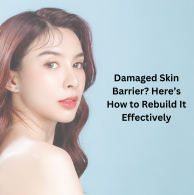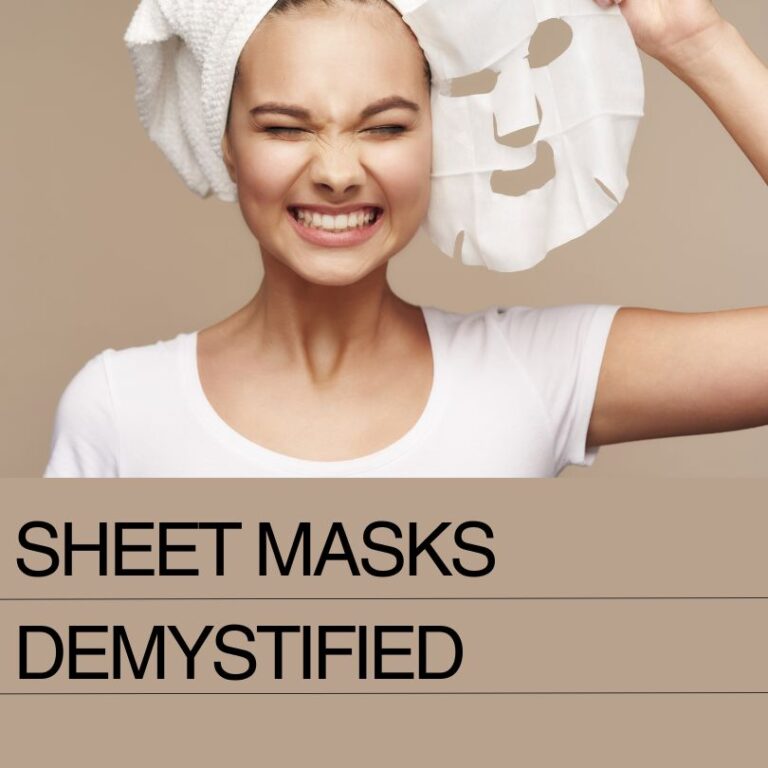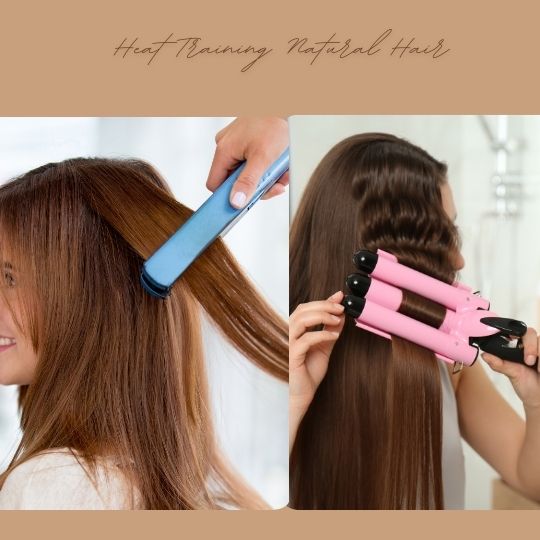The damaged skin barrier would be the after-effect of a shield that breaks down, and it would be very challenging to retain moisture and protect against irritants.
For years, I unknowingly committed some of the most significant skincare blunders possible: wiping my face with strong soaps, applying toners, and trying potential treatments like rubbing in lemons. The result? My skin barrier was hardly damaged. My face turned red and rough, and without constant hydration or soothing products, my skin became uncomfortably dry within days.
Table of Contents
ToggleYour Skin’s Natural Shield
First, we understand our skin layer and how these are damaged or do not perform well. The epidermis sublayer is the upper layer, called the stratum corneum. It remains one of the basic components of the skin barrier. It consists of three key layers:
- Corneocytes (Skin Cells):
- These are the “bricks” of your skin barrier. They are dead, flattened skin cells that form the foundation of protection. When damaged, they lose their structural integrity, leading to issues like rough texture and irritation.
- Lipids (Fatty Acids, Ceramides, Cholesterol):
- As the “filler”, these lipids help to seal intercorneocyte spaces and therefore reduce TEWL and retain skin moisture. This means vigorous washing soars away the lipids necessary to build up the skin’s protective layer, thus reducing the barrier.
- Natural Moisturizing Factors (NMFs):
- Found within the corneocytes, NMFs like urea and hyaluronic acid help retain moisture. Damaged skin often shows a loss of these factors, making the skin dry and sensitive.
When these components are impacted the skin barrier becomes impaired hencereds, dryness, acne, and general sensitivity to the exterior environment.
Signs of a Damaged Skin Barrier
- Persistent redness and irritation
- Dry, rough, or flaky texture
- Acne or increased breakouts
- Tightness after cleansing
- Increased sensitivity to skincare products
My Journey to Repairing a Broken Skin Barrier
Here’s what worked for me damaged skin barrier:
I switched to a gel-based cleanser, a hydrating face oil, and SPF (when necessary). Although I’ve seen significant improvement, my skin remains red at times.
No chemical exfoliants, harsh scrubs, or toners. I relied solely on cold water splashes and allowed my skin to heal without interference. Using layers of hydrating toners like Cezanne Deep Moisture worked wonders. I paired it with barrier-repairing products rich in ceramides, such as Holika Holika Good Cera Cream.
After applying hydrating products, I sealed everything with a thick layer of Aquaphor to prevent water loss. I replaced traditional cleansers with oil cleansing methods using products like Living Libations’ Sea Buckthorn Oil. Repairing a damaged skin barrier takes time. I bevile mostly K and J beauty skincare products to heal the skin. It didn’t take long because all these products are based on hydrating and hydrating. When we heal damaged skin with hydration and moisture nobody breaks our restored skin barrier on the face.
The natural moisturizing factor includes Natural Moisturizing Factors (NMFs), which include urea, amino acids, and lactic acid to hold moisture in the corneocytes. The reserve and the constantly repeated coating are supported through the process of hydration, as water is the main need of this layer as it plays the part of giving the skin its flexibility, it is also used for replenishment.
Hydration helps in the effective sloughing off dead skin cells by the skin to make way for newer healthy skin. Young skin sheds cells every 30 days. Older skin takes about 50 days to shed cells. That may take as long as 6 -12 months depending on the kind of repair that is necessary. Of course, it can take from six months to one year, with varying results depending on the extent of the damaged skin barrier.
Effective Solutions for damaged skin barrier Recovery
- Hydrating Toners improve your damaged skin barrier by incorporating layers of hydrating toners. Trusted options like Cezanne Deep Moisture Toner deliver intense hydration and promote recovery.
- Snail Mucin has healing properties and products like the Mizon Snail Sleeping Pack are good for healing and rebuilding compromised skin.
- Ceramides boost your skin barrier. Ceramide-infused products such as Holika Holika Good Cera Cream. For additional protection and moisture retention, seal with Aquaphor Healing Ointment. Opt for an unscented moisturizer to avoid irritation, as scents can exacerbate damage. You can also use natural oils. Oils like jojoba, rosehip, argan oil etc.
- A gentle cleansing routine using squalane oil even if you do not use any cleansers. CeraVe Daily Moisturizing Lotion is best for hydration and maintaining skin health. Then use Elta MD UV clear sunscreen the best for us. These are the best and Ultra-calming barrier repair products.
- Humectants, such as glycerin and hyaluronic acid. It common component in skincare due to its power to attract and retain moisture. They work by pulling water from the deeper layers of the skin and, in humid conditions, from the surrounding environment into the stratum corneum. This hydration helps maintain the skin’s barrier function and elasticity.
- Our bodies and skin go into repair way in the night. Getting people 7-8 hours of sleep rebuilds the skin barrier as our skin regenerates new skin cells and promotes collagen production.
Should You Pop a Pimple? Everything You Need to Know About Popping Pimples Safely
Mandelic Acid for Skin: How 6% Mandelic + 2% Lactic Acid Exfoliant Transforms Your Face
Best Korean Cleansing Oil, ma:nyo Pure Cleansing Oil-review
Sample Routine for Barrier Repair

Morning:
- Splash your face with cold water.
- Apply a hydrating toner.
- Use a ceramide-rich moisturizer.
- Apply SPF (if your skin tolerates it).
Night:
- Cleanse with a gentle oil cleanser.
- Hydrate with a toner or serum.
- Seal with a thick fragrance-free moisturizer or balm like Aquaphor.
To Sum It Up
When you see your skin turn red use gel cleanser, face oil, Hydrosol, and SPF only 1 weak. This routine repairs light-damaged skin barrier. Restoring a damaged skin barrier takes time. Ditch harsh products, simplify your routine, and focus on barrier-repairing products like ceramide creams and hydrating toners. Avoid excessive cleansing and sun exposure, and let your skin heal naturally.
Ultimately, achieving a healthy skin barrier requires consistency and a gentle touch. Don’t rush the process—it’s worth it.











